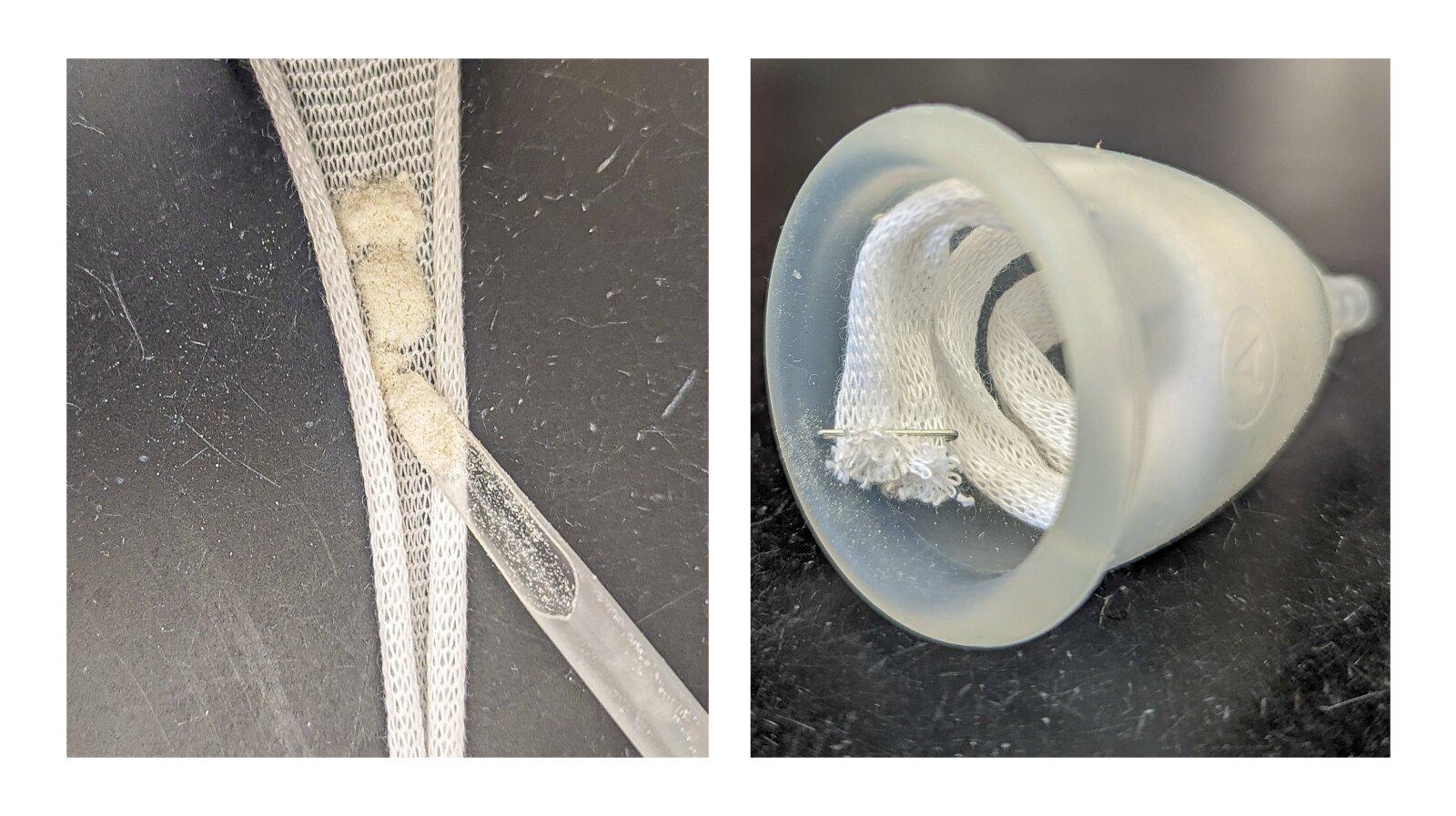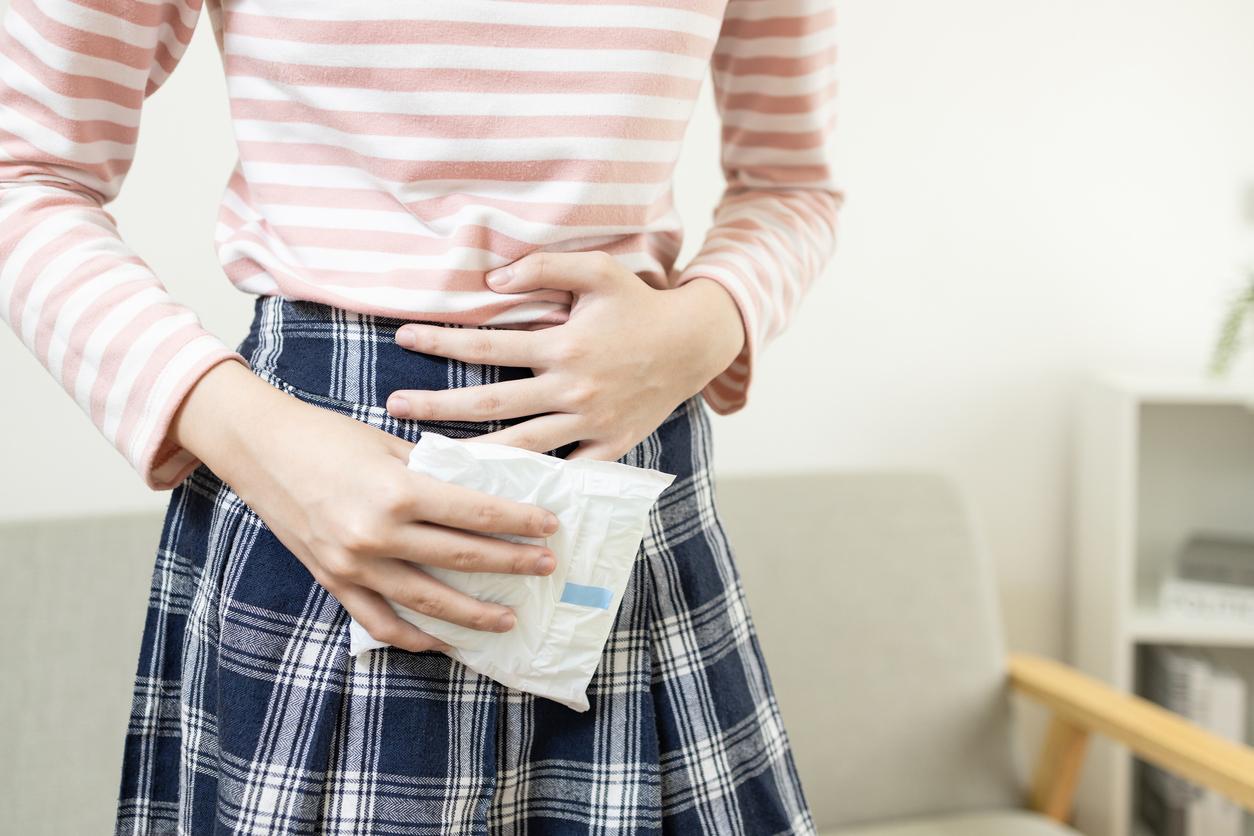A new study shows that using menstrual cups or organic tampons does not protect against toxic shock syndrome any more than other female protections and may even increase the risk of Staphylococcus aureus.

Contrary to popular belief, using menstrual cups or organic tampons does not protect against toxic shock syndrome any more than other female protections and may even increase the risk of Staphylococcus aureus, according to a news report. study published in the journal of the American Society for Microbiology Applied and Environmental Microbiology.
No advantages for organic tampons
“Our results do not support the hypothesis which suggests that tampons made exclusively from organic cotton may be inherently safer than those made from a blend of cotton and rayon,” explains Gérard Lina, professor of microbiology at Claude University. Bernard of Lyon. “We have observed that the space between the fibers which contributes to the air supply in the vagina also represents the major site of growth of Staphylococcus aureus (bacteria causing toxic shock, Editor’s note).”
In short, the growth of Staphylococcus aureus is greater in tampons, the material of which has been unstructured during manufacture, than in unmodified tampons.
Watch out for the menstrual cup
The results of the study also show that menstrual cups, very popular these days, are not safer than tampons and that they require similar precautions. The researchers even observed a greater growth of Staphylococcus aureus and a higher production of toxins in menstrual cups than in tampons, possibly due to the extra air introduced into the vagina by this type of protection.
Extensive study of protections
Fifteen intra-vaginal protection products currently on the market were tested by the researchers, namely 11 types of tampons and four types of menstrual cups. They used the “modified tampon bag method” by first placing the swabs and sections in plastic bags, then injecting liquid and a trace of bacteria taken from a patient. having suffered a toxic shock in 2014, and finally closing them and leaving them for eight hours. None of the previous studies of toxic shock and intravaginal protection products have so far included menstrual cups, which are very fashionable.
The health risks of Staphylococcus aureus
Menstrual cups and organic tampons should therefore be changed as regularly as possible. Women using menstrual cups should also boil them before each use. “Some women are carriers of Staphylococcus aureus, a bacterium which is not normally dangerous”, explains to LCI Dr Gérard Lina, medical biologist at the CHU de Lyon. “But wearing a tampon for a long time can ‘block’ it in the vagina. So it multiplies and produces dangerous toxins,” and potential toxic shock.
Treat an infection quickly
Most of these infections are easy to cure without sequelae under two conditions: take antibiotics quickly and hope that they are not facing a resistant microbe. Otherwise, the blood supply decreases and blood pressure drops, which can cause unconsciousness, coma or death in more severe cases. The bacterial poison can attack the muscles, kidneys, liver, heart and lungs, causing amputation. Since the end of the 1990s, the cases of toxic shocks have increased each year in France: 5 in 2014, 19 in 2011 and 22 in 2014. Further proof that the war against antibiotic resistance due to our overconsumption of these drugs (and their use in breeding) is far from won.
How does toxic shock syndrome manifest itself?
The symptoms of toxic shock syndrome are reminiscent of the flu with pimples that look like the ones you get when you are in the sun. So difficult to make the relation with the tampon. A small peculiarity not always present are the fainting or the feeling of dizziness when standing.
Pr Gérard Lina, head of the National Reference Center for staphylococci at the Hospices Civils de Lyon, has launched a research project to better understand this syndrome, which can cost life. He explained to Why Doctor in 2017, that “Staphylococcus aureus is naturally present in the vagina. The toxin multiplies during menstruation in the presence of a tampon, which sometimes creates confusion.
For toxic shock to occur, menstrual fluids and a blockage that oppose it are needed. The fluids serve as a sort of culture medium. If periodic protection is worn for too long, the risk of developing staphylococcus increases. The more the tampon has a strong absorbent capacity, the greater the risk. “Hence the interest in changing the tampon very regularly.
According to him, French women are poorly informed. “When we question the young women, two-thirds looked at the instructions for use, the others did not, he explains. The notion of education in the use of this type of protection does not exist. The world learns in its own way. There is a kind of taboo around it: the rules are seen as something dirty. It’s a shame because the problem is hidden “.
LMDE student health insurance reimburses women’s protection
Good to know: women’s protection will now be partially reimbursed by the LMDE student health insurance fund. Members interested in this package will only have to send their invoices by mail to LMDE, or to scan them directly on the site. They will be reimbursed up to from 20 to 25 euros per year. If this offer is already revolutionary in its concept, it is all the more so since it is aimed at women and men. The latter will thus be able to share this offer with the women around them.
A way to desecrate the rules, an often taboo subject, although natural. “According to a recent study, a woman uses an average of 22 tampons or pads per cycle, which represents a budget of 1,500 to 2,000 euros during her lifetime, and that’s not counting painkillers and underwear”, indicates the LMDE.

.

















